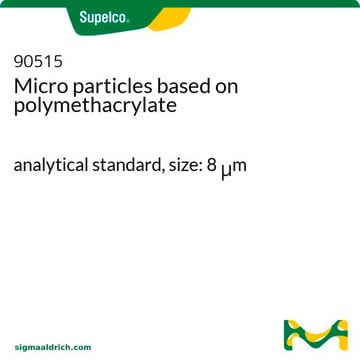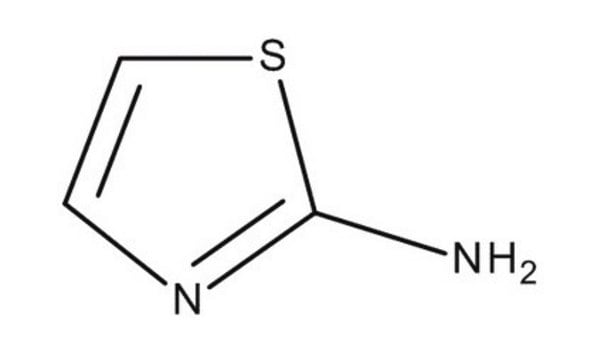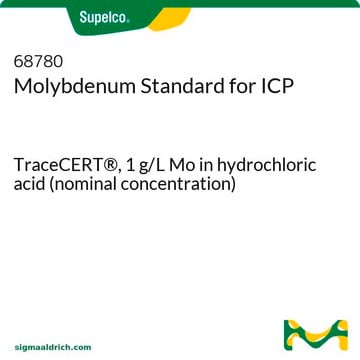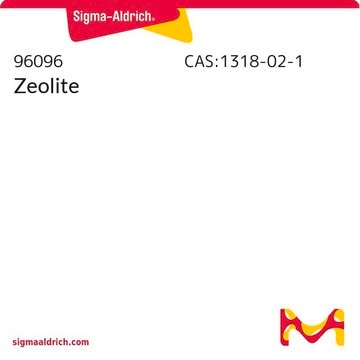おすすめの製品
由来生物
rabbit
品質水準
抗体製品の状態
purified antibody
抗体製品タイプ
primary antibodies
クローン
polyclonal
フォーム
liquid
含みます
0.1% sodium azide as preservative
交差性
human, mouse, rat
メーカー/製品名
Calbiochem®
保管条件
OK to freeze
avoid repeated freeze/thaw cycles
アイソタイプ
IgG
輸送温度
wet ice
保管温度
−70°C
ターゲットの翻訳後修飾
unmodified
遺伝子情報
human ... UCP2(7351)
詳細
Protein A purified rabbit polyclonal antibody. Recognizes the UCP-2 protein.
Recognizes the UCP-2 protein.
免疫原
a synthetic peptide [(C)QARAGGGRRYQSTV] corresponding to amino acids 144-157 of human and mouse UCP-2
アプリケーション
ELISA (1:100,000)
Immunoblotting (1:1000)
Immunocytochemistry (1:500)
Immunoblotting (1:1000)
Immunocytochemistry (1:500)
包装
Please refer to vial label for lot-specific concentration.
警告
Toxicity: Standard Handling (A)
その他情報
Does not react with UCP-1 or UCP-3. Since this antigen sequence is highly conserved, cross-reactivity across a broad range of species is expected. Variables associated with assay conditions will dictate the proper working dilution.
Stuart, J.A., et al. 2001. J. Biol. Chem.276, 18633.
Gimeno, R.E., et al. 1997. Diabetes46, 900.
Gimeno, R.E., et al. 1997. Diabetes46, 900.
法的情報
CALBIOCHEM is a registered trademark of Merck KGaA, Darmstadt, Germany
適切な製品が見つかりませんか。
製品選択ツール.をお試しください
保管分類コード
12 - Non Combustible Liquids
WGK
WGK 2
引火点(°F)
Not applicable
引火点(℃)
Not applicable
適用法令
試験研究用途を考慮した関連法令を主に挙げております。化学物質以外については、一部の情報のみ提供しています。 製品を安全かつ合法的に使用することは、使用者の義務です。最新情報により修正される場合があります。WEBの反映には時間を要することがあるため、適宜SDSをご参照ください。
Jan Code
662047-100UL:
662047-UL:
試験成績書(COA)
製品のロット番号・バッチ番号を入力して、試験成績書(COA) を検索できます。ロット番号・バッチ番号は、製品ラベルに「Lot」または「Batch」に続いて記載されています。
P Brauner et al.
Pediatric research, 49(3), 440-447 (2001-03-03)
Hepatic hematopoiesis is prominent during fetal life and ceases around birth. In rodent liver, the decline of the hepatic hematopoiesis starts abruptly at birth being accompanied by a decrease of mitochondrial uncoupling protein 2 (UCP2) expression in monocytes/macrophages, whereas hepatocytes
Jan Ježek et al.
Antioxidants & redox signaling, 23(12), 958-972 (2015-05-01)
Pancreatic β-cell chronic lipotoxicity evolves from acute free fatty acid (FA)-mediated oxidative stress, unprotected by antioxidant mechanisms. Since mitochondrial uncoupling protein-2 (UCP2) plays antioxidant and insulin-regulating roles in pancreatic β-cells, we tested our hypothesis, that UCP2-mediated uncoupling attenuating mitochondrial superoxide
Jay D Turner et al.
Circulation research, 106(4), 730-738 (2010-01-09)
Uncoupling protein (UCP)2 is a mitochondrial inner membrane protein that is expressed in mammalian myocardium under normal conditions and upregulated in pathological states such as heart failure. UCP2 is thought to protect cardiomyocytes against oxidative stress by dissipating the mitochondrial
Anjum Dihingia et al.
Scientific reports, 8(1), 10021-10021 (2018-07-04)
This study for the first time examined the prophylactic role of Tungrymbai, a well-known fermented soybean food of North-East India, against hepatic steatosis. Treatment with hexane-isopropanolic (2:1, HIET) but not hydro-alcoholic (70% ethanol, HAET) extract dose-dependently (0.1, 0.2, or 0.3 µg/mL)
C Y Zhang et al.
Cell, 105(6), 745-755 (2001-07-07)
beta cells sense glucose through its metabolism and the resulting increase in ATP, which subsequently stimulates insulin secretion. Uncoupling protein-2 (UCP2) mediates mitochondrial proton leak, decreasing ATP production. In the present study, we assessed UCP2's role in regulating insulin secretion.
ライフサイエンス、有機合成、材料科学、クロマトグラフィー、分析など、あらゆる分野の研究に経験のあるメンバーがおります。.
製品に関するお問い合わせはこちら(テクニカルサービス)








